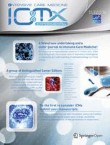Comparison between pressure-recording analytical method (PRAM) and femoral arterial thermodilution method (FATD) cardiac output monitoring in an infant animal model of cardiac arrest
The pressure-recording analytical method is a new semi-invasive method for cardiac output measurement (PRAM). There are no studies comparing this technique with femoral artery thermodilution (FATD) in an infan...
